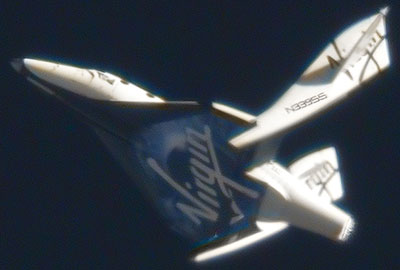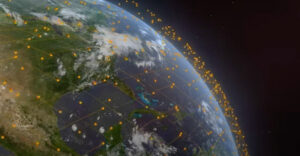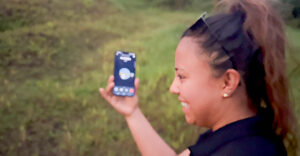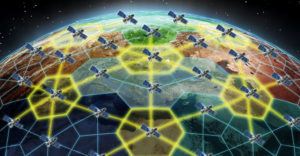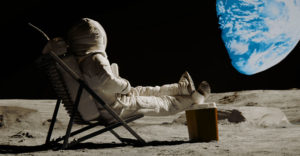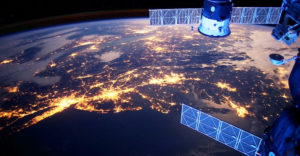Christopher Hart, acting chairman of the United States National Transportation Safety Board, which is investigating the crash last week of Virgin Galactic SpaceShipTwo, on Monday delivered his final press briefing on the initial stage of the investigation.
In an earlier report, Hart had said copilot Michael Alsbury, who died in the crash, prematurely moved a lever that unlocked the “feathering” mechanism, which would release two fins to slow down the spacecraft.
Hart clarified on Monday that it was not known whether Alsbury or copilot Peter Siebold had moved the feathering lever. It was the person in the right-hand seat of the craft who performed that action, but it was not known which copilot had been sitting there.
Further, he emphasized that he was not making a statement of cause and that the movement of the lever might not explain why the spaceship broke apart.
Siebold survived the crash but is hospitalized for treatment of injuries and as of Monday had not yet been interviewed by investigators, Hart said.
The engine was found intact, and it was moved to a hangar for examination, along with many other recovered parts, Hart earlier reported.
In his Monday briefing, Hart mentioned that additional wreckage was discovered as far away as 35 miles from the main accident site, though wind may have been involved in its dispersal, especially of smaller pieces of debris.
He also laid out a time line for events leading up to the crash.
Safety Measures Questioned
Meanwhile, it’s not going unnoticed that some aviation experts previously had expressed concerns about the project’s safety to Virgin Galactic and the U.S. Federal Aviation Agency. Among the criticisms: The design of the rocket was not peer reviewed; Virgin Galactic did not share details with outside industry experts; there was no outside oversight of the project; and an outmoded approach to testing was used.
“We will be looking at all aspects,” NTSB spokesperson Eric Weiss told TechNewsWorld.
Virgin Galactic did not respond to our request to comment for this story
The Import of Hart’s Statement
Why did Hart make a statement so early in the investigation? Was he relaying his suspicions about the crash or just avoiding closing the door on other possibilities when he said, in essence, that the feathering may not have been the sole cause of the crash?
Analysts will be examining the rich data available, thanks to SpaceShipTwo’s test-flight status, and a human performance group will examine the interface between flight crew and vehicle. It could take as long as a year for the NTSB to reach a determination as to the cause of the crash.
The NTSB’s characterization of Hart’s Monday report as its “final briefing” on the incident sparked another round of questions. Is the NTSB going to clamp down on the release of information as the investigation proceeds? Will the public, and, especially, the more than 700 space travel fans and celebrities who each ponied up US$250,000 or so for a space flight, be left in the dark? Virgin Galactic had planned to start taking passengers to space in 2015.
“We will issue news updates as events warrant,” Weiss said.
What Feathering Is About
In the normal course of its operation, SpaceShipTwo’s fins would be released to rotate upward and forward to slow down the spacecraft when it hit Mach 1.4, or 376.4 meters a second — 1.4 times the speed of sound.
Two levers must be pulled before the tailfins can be engaged, the first to unlock the mechanism and the second to trigger their movement.
One of the copilots apparently unlocked the mechanism at Mach 1.0, but the second lever was not pulled.
The fins should not have deployed if the system had worked as designed.
More Trouble Ahead
“From my perspective, knowing about the space industry, this [crash] isn’t unexpected, and it won’t be the last,” Jim McGregor, principal analyst at Tirias Research, told TechNewsWorld. “These companies are going through the learning curve the aerospace companies did in the 60s and 70s.”
Further, “we don’t have a commercial space tourist vehicle yet, and so any accident will stand out like a sore thumb,” he continued. “Unlike Boeing, you don’t have a database to show you had x crashes out of y thousand flights.”
Still, perhaps more government oversight of the process or mandatory submission of rocket designs for peer review might become a reality.
“We already have oversight from the FAA’s Office of Commercial Space Transportation,” Randa Milliron, CEO and cofounder of Interorbital, told TechNewsWorld. “When we have passengers on board, we’ll have an escape system.”

